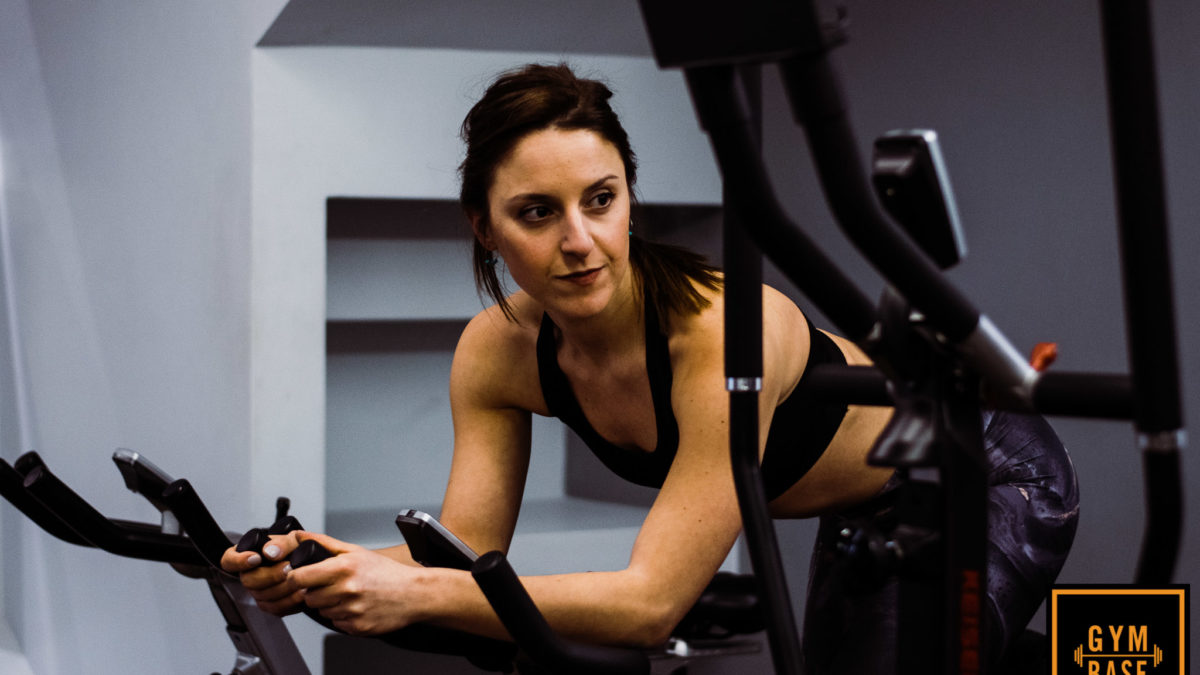Comparing adaptations to the biological indicators of health between aerobic and anaerobic exercise and their impact.
The table below shows the changes in body composition of people who followed several protocols (6 months duration) in order to reduce their fat mass.
| Body Composition | Time Period | Resistance Training | Aerobic Training | Combination of Aerobic and Resistance Training | Nutrition |
| Body weight (Kg) | Before After Difference |
100,9 99,1 -1,8 |
96 89,4 -6,6 |
100 91 -9* |
99,6 90,1 -9,5* |
| Lean body mass | Before After Difference |
58,9 64,7 5,8 |
57,5 54,2 -3,3* |
59,3 58,3 -1 |
57 53,3 -3,7* |
| Fat body mass | Before After Difference |
42,1 34,4 -7,7 |
38,4 35,2 -3,2 |
41,7 32,7 -9* |
42,6 36,8 -5,8 |
| With (*)you may see the most significant decreases | |||||
Table 6: Nutrition, resistance training, aerobic training as well as the combination of aerobic and resistance training effect on body composition.
It is observed that the biggest body weight loss was achieved through nutrition and then by the combination of resistance and aerobic exercise. However, the body weight is a wrong indicator, which very often yields wrong conclusions. It is not the body weight that it should concern us but the body composition.
Therefore, it was found that those who did the aerobic training and nutrition reduced their lean mass. As a result, their body weight loss was mainly caused due to the decrease of their lean mass, thus further reducing their basic metabolism and physical function.
On the contrary, those who did only resistance training improved their muscle mass, therefore their body weight wasn’t reduced so much. The same time, those who did aerobic and resistance training didn’t lose any lean mass. As a result of the above, the fat loss was achieved by those who did the combination of aerobic and resistance training and then by those who did only resistance training. The other two groups saw less results.
This happens because those who do resistance training increase their muscle mass and as a result their metabolism.
On the other hand, those who do aerobic exercise are constantly burning energy, even at rest. If they combine it with resistance training, which increases the basic metabolism, they achieve a much higher EPOC after training and their main source of energy is the fat.
Therefore, the combination of aerobic and resistance training helps in body fat and weight reduction. However, it is achieved less muscular hypertrophy than if performed only resistance training.
Another benefit of this training combination is the improvement of the cardiopulmonary system as described in the Table 7.
| Parameter of the Cardiorespiratory System | Type of training | ||
| Aerobic Training | Resistance Training | Combination of Aerobic & Resistance Training | |
| VO₂ max | ↑↑ | ↑↔ | ↑↑↑ |
| Cardiac Output | ↑↔ | ↔ | ↑↔ |
| Stroke volume | ↑ | ↔ | ↔ |
| Ejection Fraction | ↑↔ | ↔ | ↑↔ |
| End-systolic volume | ↔ | ↔ | ↔ |
| End-diastolic volume | ↑↔ | ↔ | ↑↔ |
| Vascular Function | ↑↑ | ↑ | ↑↑ |
| Angiogenesis | ↑ | ↑↑ | ↑↑ |
Table 7: Combination of aerobic and resistance training as 1 training unit in selected parameters of the cardiorespiratory system of trainees.
(↓) denotes the decrease, (↑) the increase and (↔) undifferentiation of the function of the parameters. The more arrows, the greater the effect is.
References:
ACSM. (2008). Personal trainer’s guide. Athens: Athlotipo
Artal, R., & O’Toole, M. (2003). Guidelines of the American College of Obstetricians and Gynecologists for exercise during pregnancy and the postpartum period. Br J Sports Med, 37(1), 6-12; discussion 12.
Baechle, T. R., & Earle, R. W. (2008). Essentials of strength training and conditioning (3rd Ed.). Champaign, IL: Human kinetics.
Balady, G. J., Chaitman, B., Driscoll, D., Foster, C., Froelicher, E., Gordon, N., . . . Bazzarre, T. (1998). Recommendations for cardiovascular screening, staffing, and emergency policies at health/fitness facilities. Circulation, 97(22), 2283-2293.
Bird, S. P., Tarpenning, K. M., & Marino, F. E. (2005). Designing resistance training programmes to enhance muscular fitness: a review of the acute programme variables. Sports Med, 35(10), 841-851. doi: 35102 [pii]
Braith, R. W., & Beck, D. T. (2008). Resistance exercise: training adaptations and developing a safe exercise prescription. Heart Fail Rev, 13(1), 69-79. doi: 10.1007/s10741-007-9055-9
Byrne, H. K., & Wilmore, J. H. (2001). The effects of a 20-week exercise training program on resting metabolic rate in previously sedentary, moderately obese women. Int J Sport Nutr Exerc Metab, 11(1), 15-31.
Cardinale, M., Newton, R., & Nosaka, K. (2011). Strength and Conditioning: Biological Principles and Practical Applications: Wiley. com.
Cauza, E., Hanusch-Enserer, U., Strasser, B., Ludvik, B., Metz-Schimmerl, S., Pacini, G., . . . Haber, P. (2005). The relative benefits of endurance and strength training on the metabolic factors and muscle function of people with type 2 diabetes mellitus. Arch Phys Med Rehabil, 86(8), 1527-1533. doi: 10.1016/j.apmr.2005.01.007
Colberg, S. R., Sigal, R. J., Fernhall, B., Regensteiner, J. G., Blissmer, B. J., Rubin, R. R., . . . Braun, B. (2010). Exercise and Type 2 Diabetes. Diabetes Care, 33(12), 2692-2696. doi: 10.2337/dc10-1548
Connes, P., Hue, O., & Perrey, S. (2010). Exercise Physiology: From a Cellular to an Integrative Approach (Vol. 75): IOS Press.
Dick, F. W. (2002). Sports training principles (4th ed.). London: A and C Black.
Dolezal, B. A., & Potteiger, J. A. (1998). Concurrent resistance and endurance training influence basal metabolic rate in nondieting individuals. J Appl Physiol, 85(2), 695-700.
Donnelly, J. E., Blair, S. N., Jakicic, J. M., Manore, M. M., Rankin, J. W., & Smith, B. K. (2009). American College of Sports Medicine Position Stand. Appropriate physical activity intervention strategies for weight loss and prevention of weight regain for adults. Med Sci Sports Exerc, 41(2), 459-471. doi: 10.1249/MSS.0b013e3181949333
Faigenbaum, A. D., Kraemer, W. J., Blimkie, C. J., Jeffreys, I., Micheli, L. J., Nitka, M., & Rowland, T. W. (2009). Youth resistance training: updated position statement paper from the national strength and conditioning association. J Strength Cond Res, 23(5 Suppl), S60-79. doi: 10.1519/JSC.0b013e31819df407
Garber, C. E., Blissmer, B., Deschenes, M. R., Franklin, B. A., Lamonte, M. J., Lee, I. M., . . . Swain, D. P. (2011). American College of Sports Medicine position stand. Quantity and quality of exercise for developing and maintaining cardiorespiratory, musculoskeletal, and neuromotor fitness in apparently healthy adults: guidance for prescribing exercise. Med Sci Sports Exerc, 43(7), 1334-1359. doi: 10.1249/MSS.0b013e318213fefb
Geliebter, A., Maher, M. M., Gerace, L., Gutin, B., Heymsfield, S. B., & Hashim, S. A. (1997). Effects of strength or aerobic training on body composition, resting metabolic rate, and peak oxygen consumption in obese dieting subjects. Am J Clin Nutr, 66(3), 557-563.
Gordon, N. (2009). ACSM’s Guidelines for Exercise Testing and Prescription: Philadelphia, PA: Lippincott Williams & Wilkins.
Hamm, L. F., Sanderson, B. K., Ades, P. A., Berra, K., Kaminsky, L. A., Roitman, J. L., & Williams, M. A. (2011). Core competencies for cardiac rehabilitation/secondary prevention professionals: 2010 update: position statement of the American Association of Cardiovascular and Pulmonary Rehabilitation. J Cardiopulm Rehabil Prev, 31(1), 2-10. doi: 10.1097/HCR.0b013e318203999d
Hargreaves, M., & Spriet, M. (2006). Exercise Metabolism. Champaign, IL: Human Kinetics.
Holm, L., van Hall, G., Rose, A. J., Miller, B. F., Doessing, S., Richter, E. A., & Kjaer, M. (2010). Contraction intensity and feeding affect collagen and myofibrillar protein synthesis rates differently in human skeletal muscle. Am J Physiol Endocrinol Metab, 298(2), E257-269. doi: 10.1152/ajpendo.00609.2009
Jackson, C. G. R., Dickinson, A. L., & Ringel, S. P. (1990). Skeletal muscle fiber area alterations in two opposing modes of resistance-exercise training in the same individual. European Journal of Applied Physiology and Occupational Physiology, 61(1-2), 37-41.
Kohrt, W. M., Bloomfield, S. A., Little, K. D., Nelson, M. E., & Yingling, V. R. (2004). American College of Sports Medicine Position Stand: physical activity and bone health. Med Sci Sports Exerc, 36(11), 1985-1996.
Kraemer, W. J., & Ratamess, N. A. (2004). Fundamentals of resistance training: progression and exercise prescription. Med Sci Sports Exerc, 36(4), 674-688. doi: 00005768-200404000-00017 [pii]
Mandic, S., Myers, J., Selig, S. E., & Levinger, I. (2012). Resistance versus aerobic exercise training in chronic heart failure. Curr Heart Fail Rep, 9(1), 57-64. doi: 10.1007/s11897-011-0078-0
Marzolini, S., Oh, P. I., Thomas, S. G., & Goodman, J. M. (2008). Aerobic and resistance training in coronary disease: single versus multiple sets. Med Sci Sports Exerc, 40(9), 1557-1564. doi: 10.1249/MSS.0b013e318177eb7f
McArdle, W. D., Katch, F. I., & Katch, V. L. (2006). Essentials of exercise physiology: Lippincott Williams & Wilkins.
Metkus, T. S., Jr., Baughman, K. L., & Thompson, P. D. (2010). Exercise prescription and primary prevention of cardiovascular disease. Circulation, 121(23), 2601-2604. doi: 121/23/2601 [pii]
10.1161/CIRCULATIONAHA.109.903377
Mougios, V. (2006). Exercise Biochemistry. Champaign (IL): Human Kinetics.
Munn, J., Herbert, R. D., Hancock, M. J., & Gandevia, S. C. (2005). Resistance training for strength: effect of number of sets and contraction speed. Med Sci Sports Exerc, 37(9), 1622-1626. doi: 00005768-200509000-00024 [pii]
Nader, G. A. (2006). Concurrent strength and endurance training: from molecules to man. Med Sci Sports Exerc, 38(11), 1965-1970. doi: 10.1249/01.mss.0000233795.39282.33
Pescatello, L. S., Thompson, W. R., & Gordon, N. F. (2009). A Preview of ACSM’s Guidelines for Exercise Testing and Prescription, Eighth Edition. ACSM’s Health & Fitness Journal, 13(4), 23-26.
Piepoli, M. F., Corrà, U., Benzer, W., Bjarnason-Wehrens, B., Dendale, P., Gaita, D., . . . Schmid, J.-P. (2010). Secondary prevention through cardiac rehabilitation: from knowledge to implementation. A position paper from the Cardiac Rehabilitation Section of the European Association of Cardiovascular Prevention and Rehabilitation. European Journal of Cardiovascular Prevention & Rehabilitation, 17(1), 1-17. doi: 10.1097/HJR.0b013e3283313592
Pollock, M. L., Franklin, B. A., Balady, G. J., Chaitman, B. L., Fleg, J. L., Fletcher, B., . . . Bazzarre, T. (2000). Resistance Exercise in Individuals With and Without Cardiovascular Disease : Benefits, Rationale, Safety, and PrescriptionAn Advisory From the Committee on Exercise, Rehabilitation, and Prevention, Council on Clinical Cardiology, American Heart Association. Circulation, 101(7), 828-833. doi: 10.1161/01.cir.101.7.828
Saltin, B., & Astrand, P.-O. (1993). Free fatty acids and exercise. The American journal of clinical nutrition, 57(5), 752S-757S.
Schmitz, K. H., Courneya, K. S., Matthews, C., Demark-Wahnefried, W., Galvao, D. A., Pinto, B. M., . . . Schwartz, A. L. (2010). American College of Sports Medicine roundtable on exercise guidelines for cancer survivors. [Consensus Development Conference
Research Support, Non-U.S. Gov’t]. Med Sci Sports Exerc, 42(7), 1409-1426. doi: 10.1249/MSS.0b013e3181e0c112
Kleisouras, Β. (2001). Physiology of the exercise. Paschalides, Athens.
Kleisouras, Β. (2004). Ergophysiology. Athens: Salto





